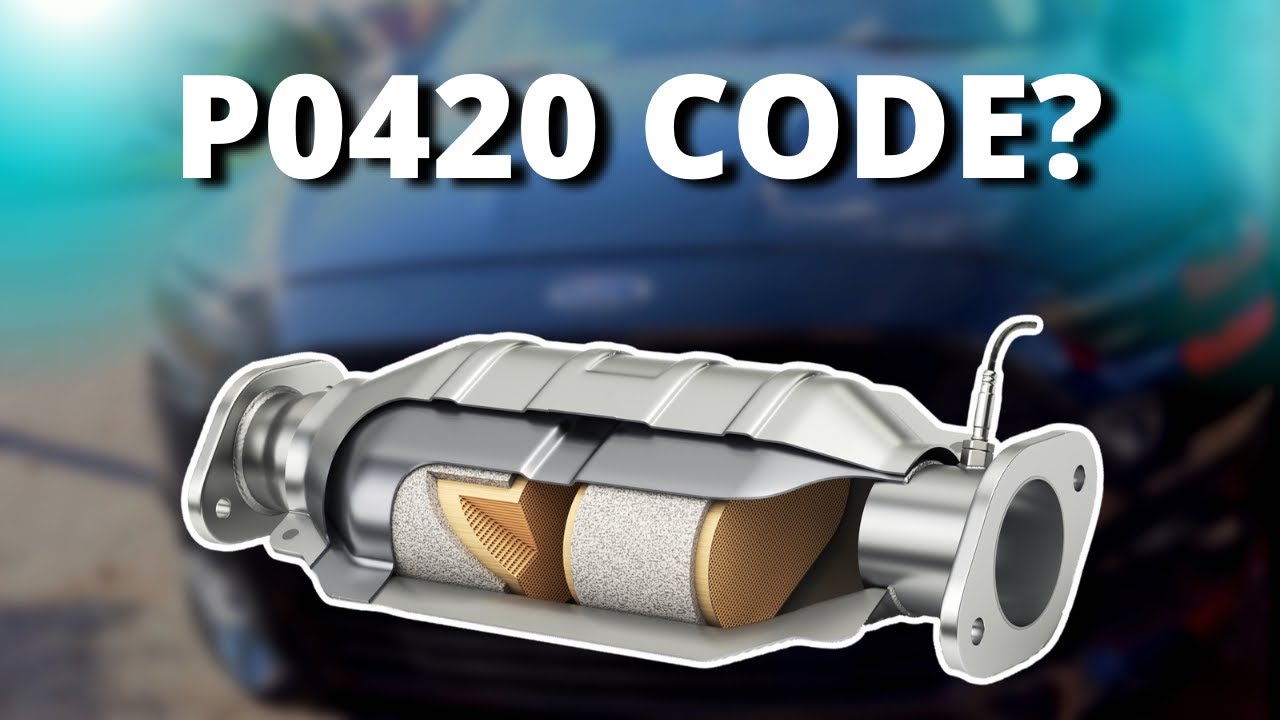P0420 Code: Catalyst System Efficiency Below Threshold

The P0420 code is a common diagnostic trouble code in vehicle diagnostics that relates to the catalytic converter. The catalytic converter plays a crucial role in the exhaust system and the overall performance of your vehicle. It is important to maintain a healthy catalyst system to ensure optimal fuel efficiency and reduce harmful emissions. In this article, we will provide a detailed explanation of the P0420 code, its significance, and offer expert tips on how to improve your catalyst system's efficiency.
Understanding the P0420 Code
The P0420 code is generated when the catalytic converter is not functioning properly. It indicates that the efficiency of the catalytic converter is below the manufacturer's specified threshold. This could be due to a variety of reasons, including catalytic converter failure, oxygen sensor issues, or exhaust leaks. It is crucial to understand the root cause of the problem to effectively address it and prevent further damage to your vehicle.
One important thing to note is that ignoring the P0420 code can result in decreased fuel efficiency, reduced engine performance, and increased emissions. Therefore, it is essential to diagnose and resolve the issue as soon as possible to maintain your vehicle's optimal performance and minimize its environmental impact.

Diagnosing the P0420 Code
Diagnosing the P0420 code requires the use of an OBD-II scanner. This diagnostic tool allows you to retrieve trouble codes from your vehicle's onboard computer and perform live data analysis. By interpreting the trouble codes and analyzing the live data, you can pinpoint the underlying issue causing the P0420 code.
Starting the diagnostic process with a visual inspection is often recommended. By visually inspecting the catalytic converter, you can look for any signs of damage or failure, such as cracks, discoloration, or restricted exhaust flow. Additionally, checking for exhaust leaks is crucial as they can affect the efficiency of the catalytic converter. Leaks can occur at various points in the exhaust system, including exhaust manifold gaskets, catalytic converter connections, and muffler joints. Performing a visual inspection using a smoke machine or soapy water can help identify these leaks.
Another important component to test is the oxygen sensor. The oxygen sensor plays a vital role in the catalyst system, monitoring the oxygen levels in the exhaust gases. Testing the oxygen sensor involves using a digital multimeter and a propane torch. By comparing the oxygen sensor readings to the manufacturer's specifications, you can determine if the sensor is functioning properly or if it needs replacement.
Fixing the P0420 Code
Once you have identified the underlying issue causing the P0420 code, it is crucial to address it promptly and effectively. While some people may be tempted to simply reset the code, this is not a recommended solution. **Addressing the underlying issue is essential to restore your vehicle's optimal performance**.
If the catalytic converter is found to be faulty, replacing it is often necessary. Step-by-step instructions on how to replace a catalytic converter can be followed, ensuring compatibility with your vehicle's exhaust system and emissions standards. It is important to choose the right catalytic converter based on its specifications and certifications.
However, for those looking for alternatives, there are aftermarket solutions available for improving catalyst system efficiency. These solutions include catalytic converter cleaner additives and oxygen sensor spacers. While these aftermarket options may provide temporary relief, they may not be a permanent fix. **It is important to consider the benefits and limitations of these solutions before making a decision**.
Preventing P0420 Code Recurrence
Preventive maintenance is key to avoiding future occurrences of the P0420 code. Regular vehicle inspection and maintenance can help keep your catalyst system in optimal condition. **Checking for exhaust leaks, replacing oxygen sensors, and maintaining proper fuel and oil quality are essential practices**.
By following these recommended maintenance practices, you can ensure that your catalytic converter functions efficiently, resulting in improved fuel efficiency, reduced emissions, and enhanced overall vehicle performance.
In conclusion, the P0420 code is an important indicator of a malfunctioning catalytic converter. Addressing this issue promptly and effectively is crucial for maintaining your vehicle's optimal performance and reducing harmful emissions. We have provided a comprehensive guide on understanding and diagnosing the P0420 code, as well as tips for resolving the issue and preventing its recurrence.
Remember, when dealing with the P0420 code, it is essential to prioritize **proper diagnosis and addressing the underlying issue**, rather than simply resetting the code. By taking the necessary actions, you can improve the efficiency of your catalyst system and ensure a smoother and more environmentally friendly driving experience. Take action today and enjoy the benefits of an efficiently functioning catalyst system!

If you want to know other articles similar to P0420 Code: Catalyst System Efficiency Below Threshold you can visit the category Automotive Mechanics.
